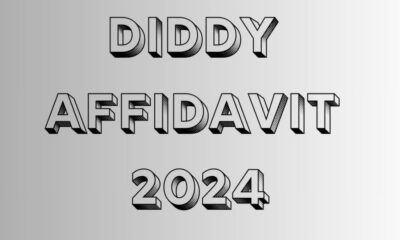Law
Sidney Conroy: A Champion of Advocacy and Leadership

Law
Stuffed Animal Court Case: A Bizarre Legal Battle

In a world filled with legal disputes, some cases stand out for their oddities. One such peculiar case is the stuffed animal court case, a legal battle that caught public attention due to its seemingly trivial subject matter but turned out to involve complex issues around ownership, intellectual property, and consumer rights.
What is the Stuffed Animal Court Case?
At the center of the stuffed animal court case was a dispute involving the design, branding, or ownership of a particular stuffed animal line. The lawsuit could involve a toy company suing another for copyright infringement, claiming that one party had copied the unique features, branding, or functionality of a particular stuffed animal. Alternatively, it might involve an individual’s rights over a custom design or creation that was unfairly used or replicated without permission.
These types of cases often arise when stuffed animals are more than just toys. They could be part of a popular franchise, a collectible series, or custom-made creations with sentimental value. In these situations, intellectual property law comes into play, leading to a serious legal battle that has far-reaching implications.
Intellectual Property and Stuffed Animals
The stuffed animal court case highlighted the importance of intellectual property rights in the toy industry. Designers, creators, and manufacturers invest significant time and resources into crafting unique products, including stuffed animals with specific features, appearances, and sometimes even patented materials or technologies. When these rights are infringed upon, a legal case can ensue, protecting the original creators from financial loss and preserving their creative integrity.
In this case, the dispute likely revolved around claims that one party had copied or unlawfully reproduced aspects of a stuffed animal that were protected under copyright or trademark law. Whether it was the shape, color scheme, materials, or even a character associated with the toy, the court had to determine whether intellectual property rights had been violated.
Emotional Attachment and Consumer Rights
Beyond the business side of the stuffed animal court case, there are also important questions about consumer rights and emotional attachment. For many people, stuffed animals are more than just commercial products—they hold emotional significance, often serving as beloved companions or sentimental keepsakes. This aspect of the case added an extra layer of complexity.
For instance, a legal dispute might arise if a toy manufacturer discontinued a specific stuffed animal line or altered its design in a way that upset loyal customers. In such situations, consumers might argue for their right to receive the product as originally advertised, or they may seek compensation if they feel misled by changes made to the design of a beloved toy.
The Outcome and Legal Precedent
While the stuffed animal court case may sound lighthearted on the surface, the outcome of such cases can set important legal precedents for the toy industry and intellectual property law in general. If the case involved a ruling in favor of the original creators or designers, it would reinforce the importance of protecting creative works from imitation or unfair competition. Conversely, if the case favored the defendant, it could potentially open the door for looser interpretations of copyright protections, affecting future disputes within creative industries.
Public Reaction and Media Attention
Due to its unusual nature, the stuffed animal court case likely garnered significant public attention, with media outlets reporting on the twists and turns of the trial. People may have been intrigued by the idea of stuffed animals becoming the center of a legal battle, with some finding the case humorous, while others recognized the serious business implications behind it.
Public reaction might also have been influenced by the emotional connection many individuals have with stuffed animals, particularly if the case involved a popular or nostalgic toy line. The widespread interest in the case underscores the fact that, in some instances, even seemingly insignificant items like stuffed animals can spark major legal conflicts.
Conclusion
The stuffed animal court case serves as a reminder that legal disputes can arise from even the most unexpected sources. While the case may appear whimsical, it brings to light important issues regarding intellectual property, consumer rights, and the emotional significance of everyday objects. The outcome of this case not only affects the toy industry but also offers insights into how legal battles over creativity and ownership can shape the future of product development and design.
Ultimately, this unusual case demonstrates that, in the eyes of the law, no issue is too small—especially when it comes to protecting the rights of creators and consumers alike.
-

 Entertainment3 months ago
Entertainment3 months agoOllyhibs: A Deep Dive into the Digital Frontier
-

 Technology2 months ago
Technology2 months agoXmegle: Exploring the Popular Online Chat Platform
-

 News2 months ago
News2 months agoIzonemedia360.com: Revolutionizing Digital Media Solutions
-

 Technology7 months ago
Technology7 months agowavr-297: Revolutionizing Technology
-

 Technology7 months ago
Technology7 months agoWhat is ilikecomox?
-

 News6 months ago
News6 months agoChillwithKira Ticket Show: A New Sensation in Live Entertainment
-

 News5 months ago
News5 months agoDiddy Affidavit 2024: A Closer Look at the Latest Legal Developments
-

 Health & Fitness7 months ago
Health & Fitness7 months agoUnveiling the Superiority of WellHealth Organic Buffalo Milk

